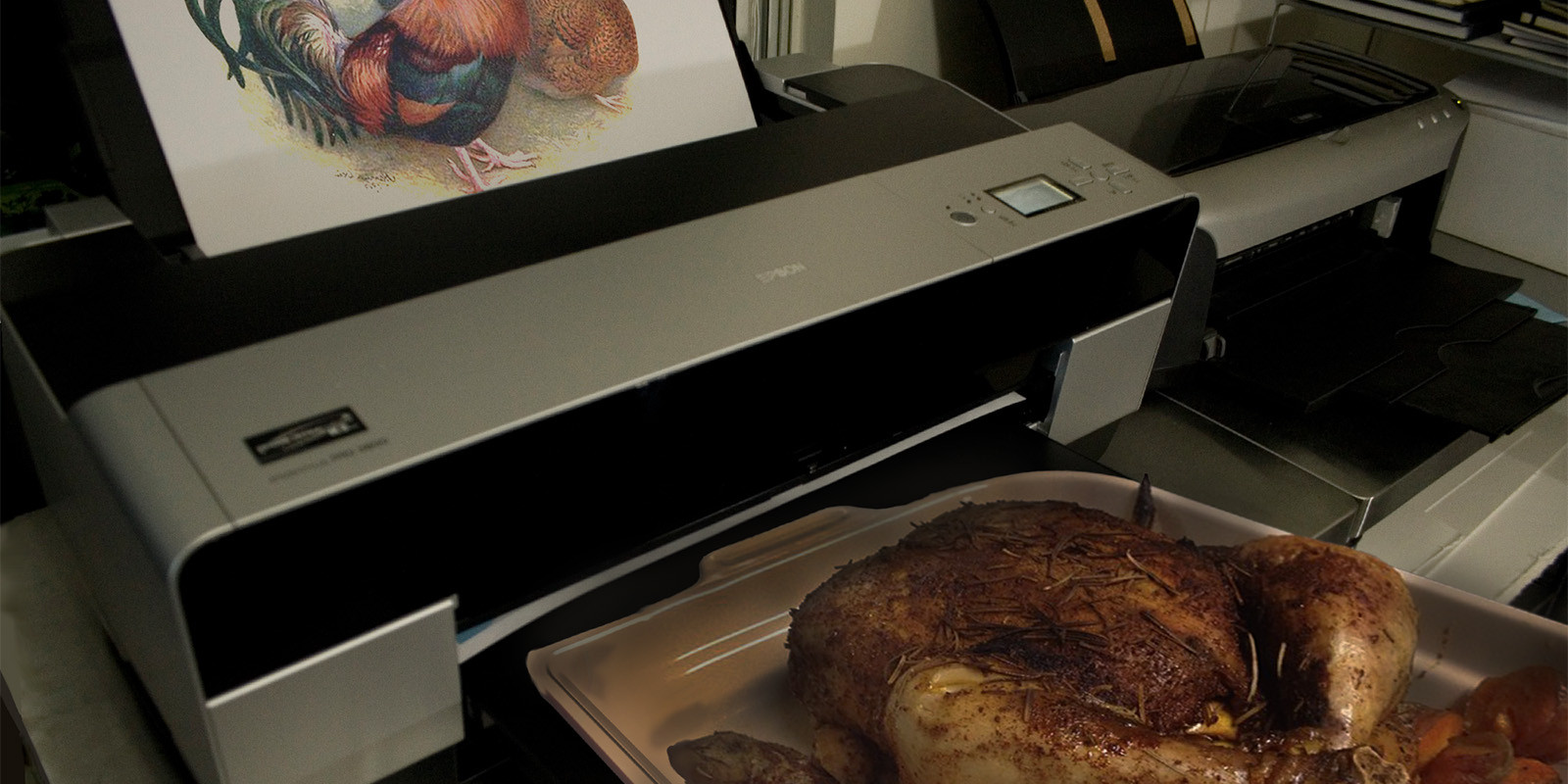Friday the 13th Part III: How an '80s horror franchise bet it all on 3-D — and won
The third entry in the slasher franchise gave Jason Vorhees his hockey mask — and gave moviegoers the chance to see a bloody eyeball pop off the screen


This is the third article in a series revisiting one Friday the 13th movie every Friday the 13th. Read the first two chapters here: How Friday the 13th accidentally perfected the slasher movie and Friday the 13th Part 2: How a young franchise took its first steps toward creating a horror icon.
With two successful Friday the 13th movies in just two years, Paramount had the beginnings of a major franchise. But buoyed by the success of Halloween and Friday the 13th, copycat slasher films were flooding into theaters. If the franchise was going to stay on top of the box-office, it needed to find a new advantage.
How best to convince moviegoers they needed to take another trip to Crystal Lake? The filmmaking team tasked with Friday the 13th Part III found the answer: the triumphant return of 3-D movies, which had fallen out of favor in America after a brief, faddy bubble in the 1950s.
The Week
Escape your echo chamber. Get the facts behind the news, plus analysis from multiple perspectives.

Sign up for The Week's Free Newsletters
From our morning news briefing to a weekly Good News Newsletter, get the best of The Week delivered directly to your inbox.
From our morning news briefing to a weekly Good News Newsletter, get the best of The Week delivered directly to your inbox.
With the strategy in place, everything about Part III — the screenplay, the casting, the acting — became a much lower priority than making sure the 3-D worked. "The writing and the acting didn't matter at all. I don't imagine any of us really feel like this was the crowning glory of our talent. I hope not," recalled star David Katims. Screenwriter Petru Popescu is even blunter: "I went to some of the casting sessions and I saw that there were boys and girls who gave good readings and those who gave bad readings, but it didn't matter. They were hired for their look, not for how they said the words."
The strict focus on 3-D didn't make Part III any easier to shoot. Many of the people who worked on Part III have recounted the nightmarish process required to achieve the film's 3-D effects: a long, technical, tedious shoot in which scenes both mundane and bloody were filmed over and over again to ensure that the 3-D was as impressive as possible.
Now, more than 30 years later, was the 3-D worth all that trouble? Take a look for yourself:
That's just one of many hilariously pointless moments designed entirely to shove things in the face of the viewers. Two characters have a juggling contest. Somebody pops some popcorn. A snake leaps at the camera. In one particularly memorable scene, Jason squeezes a character's head so hard that his eyeball bursts out and goes flying at the screen — the rare moment in cinema history that is literally eye-popping.
A free daily email with the biggest news stories of the day – and the best features from TheWeek.com
Seen today, the 3-D effects in Part III are noteworthy for the same reasons the Chia Pet or the Pet Rock are notable: It's hard to believe so many people bought into something so dumb and kitschy. But the 3-D gambit worked. With the exception of 2003's crossover Freddy vs. Jason and the 2009 reboot of the franchise, Part III is the highest-grossing sequel in the franchise: $39.7 million total, nearly $13 million better than Part 2.
This plan may have been successful in theaters, but it also turns a modern viewing of Part III into a major headache. The only home video version available in 3-D relies on anaglyph 3-D, which you probably know better as "those migraine-inducing red-and-blue glasses."
Those glasses are serviceable when you're looking at a still image on a page, but they're unbearable when you're staring at a TV screen for 95 minutes. During a recent viewing, by the end of the movie, I was pausing every 10 minutes or so to rub my aching eyes. Having seen Part III in 3-D for the first time, I have one piece of advice for curious viewers: Never watch Part III in 3-D.
Story-wise, Part III is a paper-thin retread of the first two Friday the 13th movies, with a third batch of teenagers showing up at Crystal Lake to be efficiently butchered over a single evening. Part III's primary innovation is making the characters shriller and more irritating. Debbie (Tracie Savage) casually mentions that she's pregnant twice within minutes of her introduction — a weird piece of writing made weirder because it's irrelevant to the plot and never mentioned again. Chuck and Chili, a thinly-veiled ripoff of Cheech and Chong, exist primarily to pass 3-D joints toward the screen.
And then there's Shelly, the chubby, sad-sack nerd played by Larry Zerner. ("They said they were going skinny-dipping, and I'm not skinny enough," he complains, in one of many hilariously whiny lines.) Shelly is easily the most irritating character in Part III, which means he's also the best character in Part III. Surrounded by attractive young couples having sex with each other, and desperate to get in on the action, he settles on a can't-miss plan for impressing the women around him: pretending to be both a murder victim and a murderer, using a series of weirdly realistic props — including the hockey mask that is eventually repurposed by Jason, remaking him into the unmistakable horror icon he is today.
Shelly's actual murder at the hands of Jason is treated, inevitably, as another stupid gag, and Shelly dies as he lived, ignored by a beautiful girl for the last time. (Don't feel too bad for Larry Zerner; though his acting career quickly stalled, he went on to a career as a successful lawyer and game show contestant, eventually besting legendary Jeopardy! champ Ken Jennings on a 2007 episode of NBC's 1 vs. 100.)
Part III's protagonist is Chris Higgins (Dana Kimmell), a character with a bizarre and underwritten history with Jason. Two years before the film begins, Chris explains, she was staying in a cabin at Crystal Lake with her parents. They got in a fight, and she ran into the woods, where she was attacked by Jason. She struggled, passed out, and woke up the next day, back in her bedroom, with no memory of what happened or how she returned.
The movie takes this admission at face value, but anyone who thinks about it for more than half a second will realize it doesn't make any sense. Jason kills people — it's kind of his thing. Did he just decide to let her go? Did she wake up and run away, then develop short-term amnesia? What did her parents say when she returned? Why didn't anyone bother to follow up on her story of being attacked by a deformed man with a knife in the woods? And why on earth would she return to the site of her attack to party with her friends just two years later? Part III ignores these very rational questions altogether. (For the record, there is an explanation for the ambiguity: in the series retrospective Crystal Lake Memories, screenwriter Popescu explains that he toyed with the idea that Chris was raped. The final film leaves the encounter ambiguous because Popescu decided, correctly, that a rape would be much too dark for the franchise, which — despite its bloody violence — was always pretty cartoonish.)
Part III's ending is similarly muddy, and for good reason — it was actually the third ending conceived for the movie. Producers balked at the first ending, which definitively snuffed out the Friday the 13th franchise by allowing Chris Higgins to lop off Jason's head with a sickle. The second, which was shot but has never seen the light of day, ended with a dream sequence in which Jason cut off Chris' head. In the end, Part III splits the difference by having Chris swing an axe into Jason's skull, leaving open the very remote possibility that Jason is still alive — a contingency that proved useful when the next Friday the 13th arrived two years later.
The last scene in Part III riffs, yet again, on the famous ending from the first Friday the 13th. Chris, like Friday the 13th's Alice, responds to the murders of all her friends by taking a canoe onto Crystal Lake and falling asleep. When she wakes up, she sees Jason on the shore, taunting her with a machete. Fakeout! She wakes up. As she re-settles into the canoe, the corpse of Pamela Vorhees jumps out of the water and grabs her. Fakeout! She wakes up again. Of course, Chris would have no way of knowing that Pamela Vorhees even existed — but why let that get in the way of a good jump scare?
That kind of devil-may-care approach to narrative consistency makes Part III feel pretty messy — but as the years have passed, its shaggier qualities have turned out to be an asset. Viewed in 2015, Friday the 13th Part III is an under-sung camp classic — cornier and goofier than either of its predecessors.
In a strange way, it was also influential. Part III's success paved the way for Amityville 3-D and Jaws 3-D, which both hit theaters within a year. In the decades that followed, established horror franchises like Nightmare on Elm Street, Night of the Living Dead, Texas Chainsaw Massacre, and Saw would take their own stabs at 3-D horror. But less than two years after reviving the long-dormant technology, Friday the 13th left it behind for its fourth installment, boldly subtitled — and, as it eventually turned out, incorrectly subtitled — The Final Chapter.
Coming next Friday the 13th (November 13, 2015): The franchise goes darker — and introduces a hot young actor named Corey Feldman — in Friday the 13th: The Final Chapter.
Scott Meslow is the entertainment editor for TheWeek.com. He has written about film and television at publications including The Atlantic, POLITICO Magazine, and Vulture.


